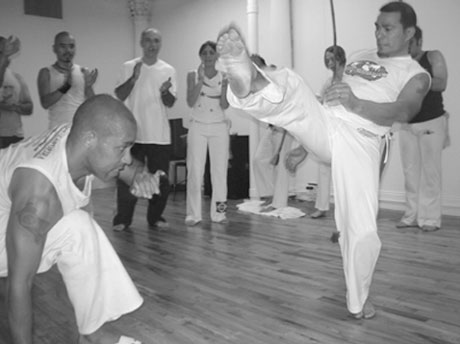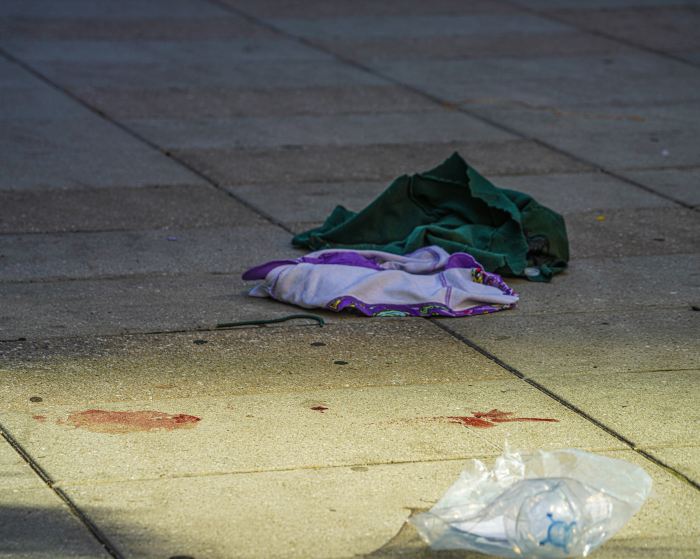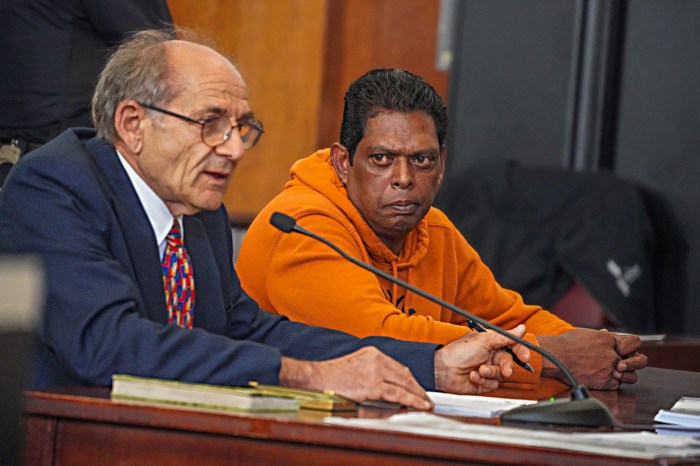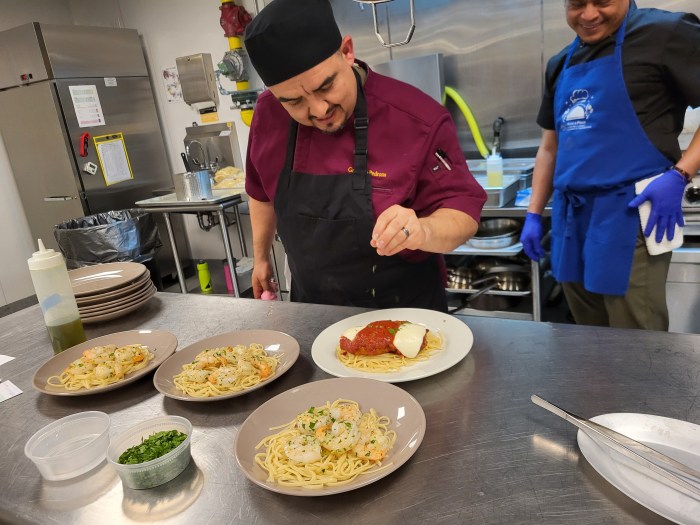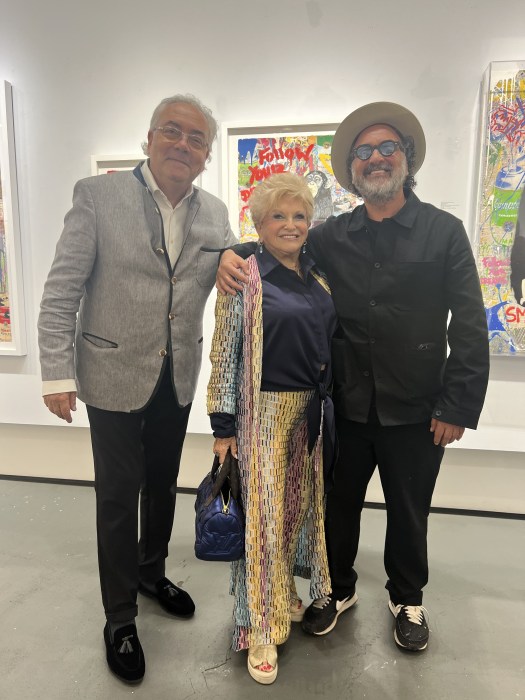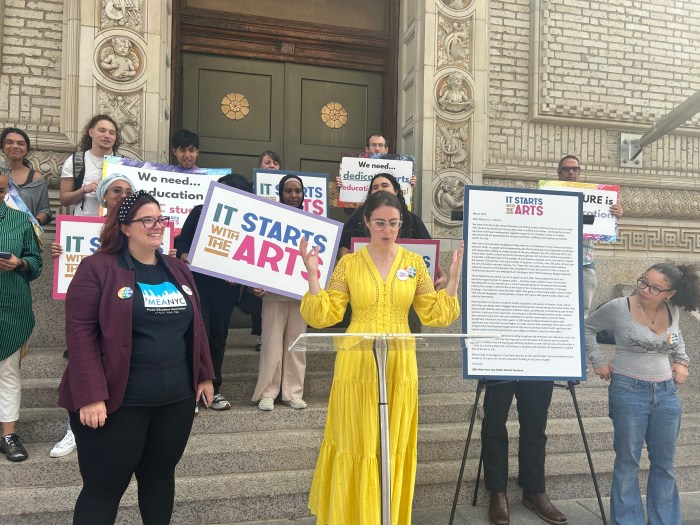By Tanya gingerich Warren
You may not have heard of it…yet. But the popularity of capoeira, the Brazilian art form that incorporates martial art, dance, music, and gymnastics, is spreading rapidly around the world.
Now Tribeca has a new center dedicated to capoeira regional, one of the main branches of capoeria. The grand-opening is this weekend, with a big kick-off celebration including free classes for all levels.
Instructor Mucuiu (his real name is Sergio Bagundes, all capoeiristas have nicknames) runs the center with his wife, Maria Elena Velardi. They began their business by running a web site dedicated to selling capoeira-related items imported from Brazil (www.capoeira-shop.com). The site was such a success, they were able to open the center.
As a child growing up in Brazil, the ever-active Mucuiu studied judo, jujitsu, and gymnastics. He didn’t come to capoeira until he was 23 — but then it quickly took over his life.
“It’s in my blood,” says the 40 year-old, sculpted Mucuiu, “Even when I talk about it, my skin tingles.”
On a Friday evening, Mucuiu led a room filled with students of various nationalities and levels. In capoeira, there are 8 levels of ability, signified by the color of your belt. The students wore cotton rope belts in white, yellow and orange, which meant they ranged from beginner to intermediate. The two men and four women in the class had incredible figures (no wonder many gyms have added capoeira to their class schedules).
Gathered in the front of the spacious, newly-painted studio were several instruments: a large, single-string, bow-like instrument called a berimbau, a pandeiro (tambourine), and a single-headed standing drum called an atabaque. Mucuiu and his students took turns playing the instruments and singing songs in Portuguese. This forms the roda de capoeira (capoeira wheel) which surrounds the jogo (game). Jogo refers to the two capoeiristas engaged in ritualized “combat,” a constant flow of movements of attack and defense. Both players try to control the space by confusing the opponent with deceptive moves, while observing the game’s rituals and manners. Students took turns participating in both the roda and the jogo.
Bodies twirling and swinging, legs kicking and sweeping—all to live percussive music and song. The students (and the instructor) seemed to be having a ball.
Beginning capoeira student Beril Kurtulus left Turkey for New York five years ago. Despite an over-energetic constitution, she had not been able to find a physical activity she really enjoyed until a friend suggested capoeira.
“I was skeptical at first because I thought it was about fighting,” says Kurtulus, whose capoeira name is Borboleta (butterfly). But after her first class she was hooked.
“Capoeira is amazing,” Kurtulus raves. “It has taken me back to my childhood. We play, listen to music, sing, dance. Of course there is discipline, but you explore it with fun. And it is not solitary like other martial arts can be, it is very interactive, you feel part of a community.” She says she now wants to learn Portugese and visit Brazil.
In Brazil, generations of slaves from various cultures in Africa, combined cultural customs, dances, rituals and fighting techniques. Capoeira was created in the 16th and 17th centuries as an expression of resistance, and as a method of spiritual and emotional empowerment. It was consequently banned, and became hidden in a dance — through the music and song, the slaves were able to conceal its combative purpose.
During one part of class, students practiced maculele, which combines the rhythmic banging of wooden sticks with movement. According to Mucuiu, this practice developed because the sound of the sticks deceived the slave owners into thinking the slaves were working, when instead they were practicing capoeira — Mucuiu describes it as “playing.”.
One of the greatest things about New York is its cultural diversity, and happily that diversity is still alive in Tribeca. At 97 Leonard Street, go down a flight of stairs and find yourself transported to Brazil.
Arte Capoeira Center offers capoeira classes for kids and adults, beginners to advanced, personal training and also maculelê (sticks dance), samba and Brazilian percussion.



